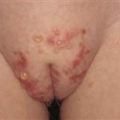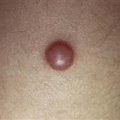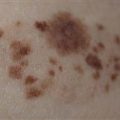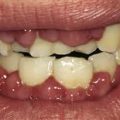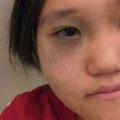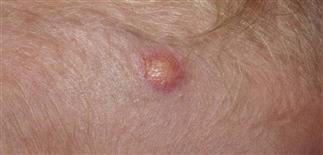
JXG. Orange nodules on infant’s scalp.

JXG. Multiple orange-brown nodules on child’s face.
CLINICAL FEATURES
Orange to yellow-brown soft nodules characterize JXG, a benign cutaneous disease. JXGs begin in infancy and are multiple, often numbering 5 to 10. Rarely, they are found in newborns. Most lesions involute spontaneously over 2 to 5 years. JXGs may develop in the iris, mimic retinoblastoma or cause vision loss. Occasionally, JXGs are found in internal organs including the testes, lung, liver, spleen and pericardium. The association of multiple JXGs and multiple café-au-lait macules in a child has been associated with an increased risk of granulocytic leukemia. Within the nodules are increased fibroblasts and lipid-filled macrophages called Touton giant cells.
TREATMENT
Since most lesions spontaneously involute, intervention is unnecessary. In children under age 2 years who have multiple JXGs, referral to an ophthalmologist is recommended.

